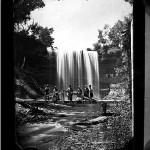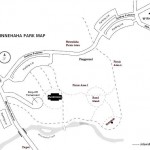Minnehaha Falls and Creek
Minnehaha Falls has been important to the Dakota people as a spiritual place. The Dakota name, Mnigaga, is a compound work – Mni- means ‘water,’ and gaga means – ‘curling’ or together mnigaga – ‘waterfall.’ The translation ‘laughing waters’ is incorrect. The incorrect translation became popular after Mary Henderson Eastman (non-Dakota second wife of Artist Seth Eastman) published her book, “Dacotah” in 1849. The book is clearly from a non-Dakota point of view.
Minnehaha Creek was to Dakota people, like non-Dakota in modern times, a place for work, living, and play. The waterway was very important in the origins of Minneapolis, as settlements and milling sites were started along its banks by the earliest white settlers.
The creek and falls have changed much over the centuries, due to natural forces and human engineering. The falls once emptied directly into the Mississippi, but centuries of natural erosion slowly moved the falls away from the River. As late as 1901 the Creek traveled through a wide marshy area throughout the area that is now Minneapolis. Since then, the creek has been heavily engineered. Homes and businesses now extend to the very banks of the creek, and the waterflow of the creek can be controlled (even stopped) from dams on Lake Minnetonka. Through all of these changes, the creek has continued to flow along its current course.
All water is sacred to the Dakota.






